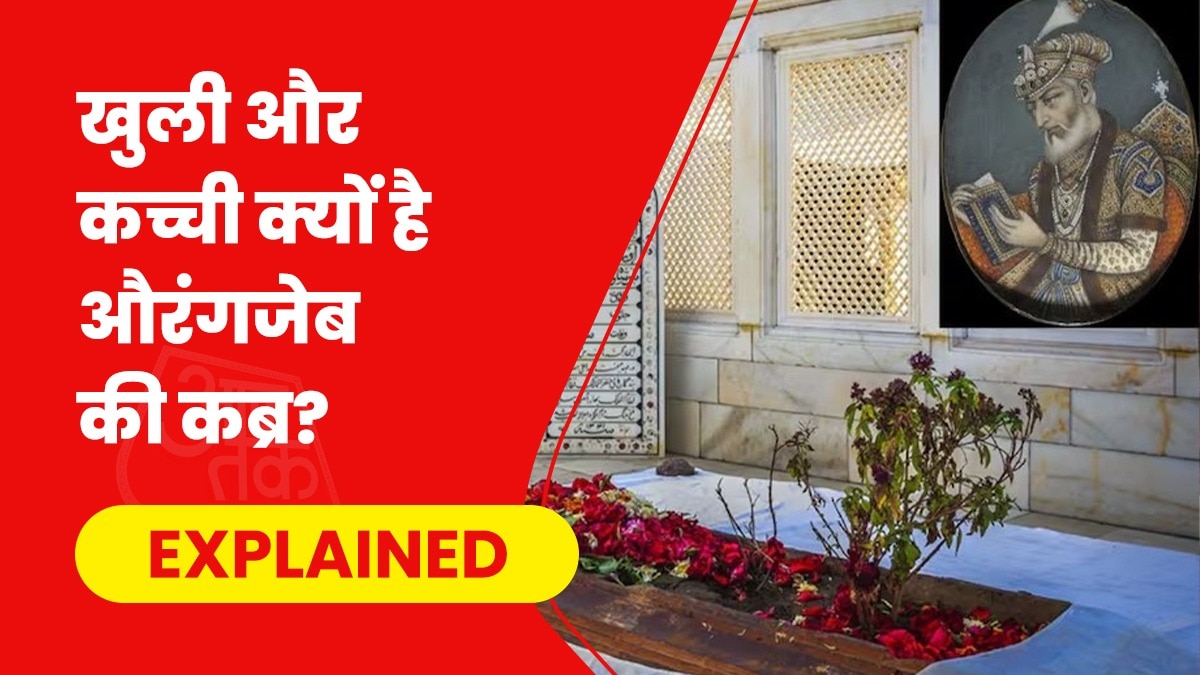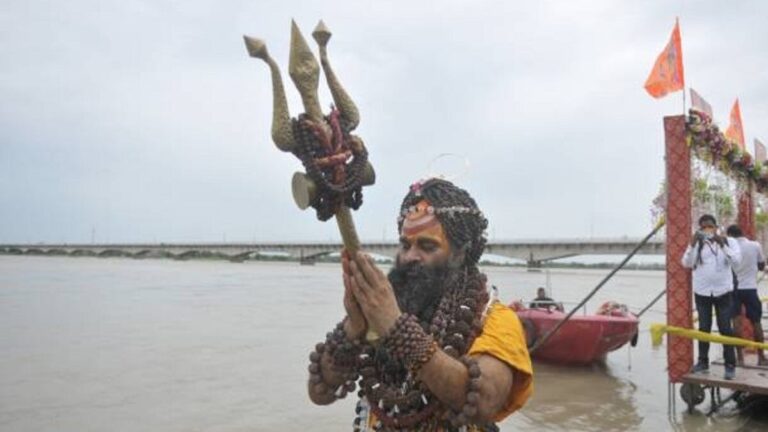Why Aurangzeb’s grave opened and raw … What does Islam say on the construction of mausoleum and tomb? – Aurangzeb Grave Open and Unpaved Islam Say About Tombs and Shrines After Chhaava Effect NtCPVP
One and a half months have passed since the Chhava film was released, but there is such a fire in the market of discussions about it that now the man wants to sit on its smoke and reach the same era. As much as Maratha Chhatrapati Sambhaji Maharaj is being done, Aurangzeb, the Mughal emperor, is not being remembered less in the discussions, but the Alam is that the question that was on his personality earlier, that question has changed now something has changed that why should there be a grave of a person like him?
Therefore, if someone is demanding to remove the grave, then someone is adamant on the demand to finish the place of the tomb itself. Overall, anger against this Mughalia emperor 350 years ago is on a boil and in the same anger the rhetoric is going on from both sides. Questions are being raised about the grave, then on this excuse, it is known that the Mughalia Sultanate’s emperor, where is the grave of Aurangzeb, how is it, and along with this, what should be said about how the grave should be in Islam.
First of all, know where Aurangzeb’s grave is
The tomb of Aurangzeb is present in Khuldabad of Sambhaji Nagar (first Aurangabad). The place of Aurangzeb’s grave, ie two yards of land is raw and a vegetable plant is planted in the middle of the grave. Mughal ruler Aurangzeb had told his son Azam Shah in his will that when he died, a raw grave of his soil should be made in Khuldabad and only a white sheet should be offered on the grave. In this regard, historian Khalid Ahmed says that earlier there were raw graves of soil, on which small green plants were planted and flowers were offered on the tomb or tomb.
Since then, plants are planted on many graves of soil. There are also many tombs around which the sweeps are planted. There is also a small plant on Aurangzeb’s grave which is replaced after every few months. Afroz Ahmed, who took care of Aurangzeb’s tomb for six generations, says that Aurangzeb had a will to his son Azam Shah that his tomb should be made of raw soil in his master’s Dargah complex, Khuldabad, the shrine of his master Sufi saint Hazrat Jainuddin Shiraji.
Aurangzeb’s grave gets wet in the rain
He told that Aurangzeb said that no kind of witch or any building should be built on his grave. Just as the grave of the poor is, it should be made… under the open sky and raw. Even today his raw grave is present under the open sky. This is the reason that Aurangzeb’s grave gets wet in the rainy month.
Nizam got beautified at the behest of Lord Curzon
At the time when the British were ruling in India, Lord Curzon told the Nizam that ‘Aurangzeb was such a great king and his grave is made of mud’. After this, the Nizam installed a white marble on Aurangzeb’s grave and made a floor. According to historians, Aurangzeb had said that there should not be any kind of luxurious or silk or velvet cloth on his grave. Only white cloth should be covered. Even today, Aurangzeb’s grave is covered with white cloth.
Why the vegetable plant on the grave?
In the middle of Aurangzeb’s grave, there is a small vegetable plant, whose height is one to one and a half feet. Afroz Ahmed, who takes care of Aurangzeb’s tomb, says that he keeps changing the vegetable plant on the grave every 2 to 3 months, because if the plant grows, then the grave can be damaged.

What should be the grave?
Now come on the question that what should be the grave? The grave is the last stop of human life. In Islam, clear guidelines have been given regarding the process of grave and burial, which have been told in Sharia. Officer Ahmed, a writer and senior journalist of books like ‘Aurangzeb’ and ‘Taj Mahal or Mami Mahal’, tells in great detail.
He says that in Islam, the most important thing about the tomb is said, it is open or raw of the grave. The open grave in Islam is said to be correct. A grave that has rain moisture and wetness. Such a grave is considered an example of humility and simplicity. Open tomb means that it is covered with soil, but there is no firm structure or roof on it. This causes natural ingredients such as sunlight and rain water directly reaches the tomb.
He says that the graves of Mughal emperors Aurangzeb and Babur are open. Babur’s tomb, which is now present in Afghanistan, is like this, where direct light comes. Simplicity and humility are the original expressions that come from the education of Islam.
Then why are many tombs of luxurious buildings?
Officer Ahmed says one more thing that the open tomb is considered better, but the covered tombs cannot be called completely non-Islamic. It is better and less better. In history, the graves of many Sufi saints and people of Chishti tradition were created. Tomb was also made on these. Later, the same practice started to be included for the burial of the emperors. Humayun’s tomb in Delhi and beautiful buildings like Taj Mahal in Agra are examples of this. However, this practice is different from the original simplicity of Islam.
Similarly, a question arises that, can a buried grave be moved to another place? Officer Ahmed says on this that this can be done. This is called “Amanti burial” in Islam. Amanti burial means that the deceased should be temporarily buried in a place and later transferred to permanent place. This practice was common during the Mughal period.
In this case, the name of Babur, the founder of the Mughal Sultanate once again, comes. In fact, Babur was first buried in the Ram Bagh of Agra (also known as Aam Bagh or Bagh-e-Gul Afshan) for several months, later his tomb was taken to Kabul in Afghanistan.

The last ritual should be filled with simplicity
Similarly, the mention of Taj Mahal also comes in this connection. Mumtaz Mahal was first buried in Burhanpur for 6 months. After this, his grave was transferred to Taj Mahal. So we can say that the process of burial in Islam is easy and is full of simplicity. At least Islam teaches this.
Dr. Raziul Islam Nadvi, (Secretary, Sharia Council, Jamaat-e-Islami Hind) also coincide that, in Islam, it has been said that there is a raw grave. He says, ‘It is a command in Islam that the body should be buried in the soil. It is recorded in the Sharia that the grave should be kept raw, that is, it should not be confirmed. A special objective of this is that after some time the tomb marks disappear and that land can be used again.
In Islam, the idea is that the grave mark should not remain for a long time. For this, the grave is covered with soil. It is not covered with bricks, stones or marbles. This also leads to the message that after death, the identity of a human being should gradually be found in the soil.
He also states that in Islam, the talk of the raw grave is said because Islam talks about simplicity and this thing should be reflected in the grave. In this way, Dr. Raziul also talks about the tomb. He says that tombs are made in many places, especially for those who are considered very elderly or saints.
What is the beliefs about the tomb?
People believe that these elders are close to Allah and by going to their tomb, they can reach Allah, but the original education of Islam, which is based on Tauheed (monotheism), is against the idea. It is clear in Islam that prayer should not be sought from anyone except Allah. People buried in the grave are fascinated by Dua themselves, they have no such power to help others or recommend Allah. Therefore, going to the tomb and praying is considered against Islam.
(tagstotranslate) aurangzeb’s grave






